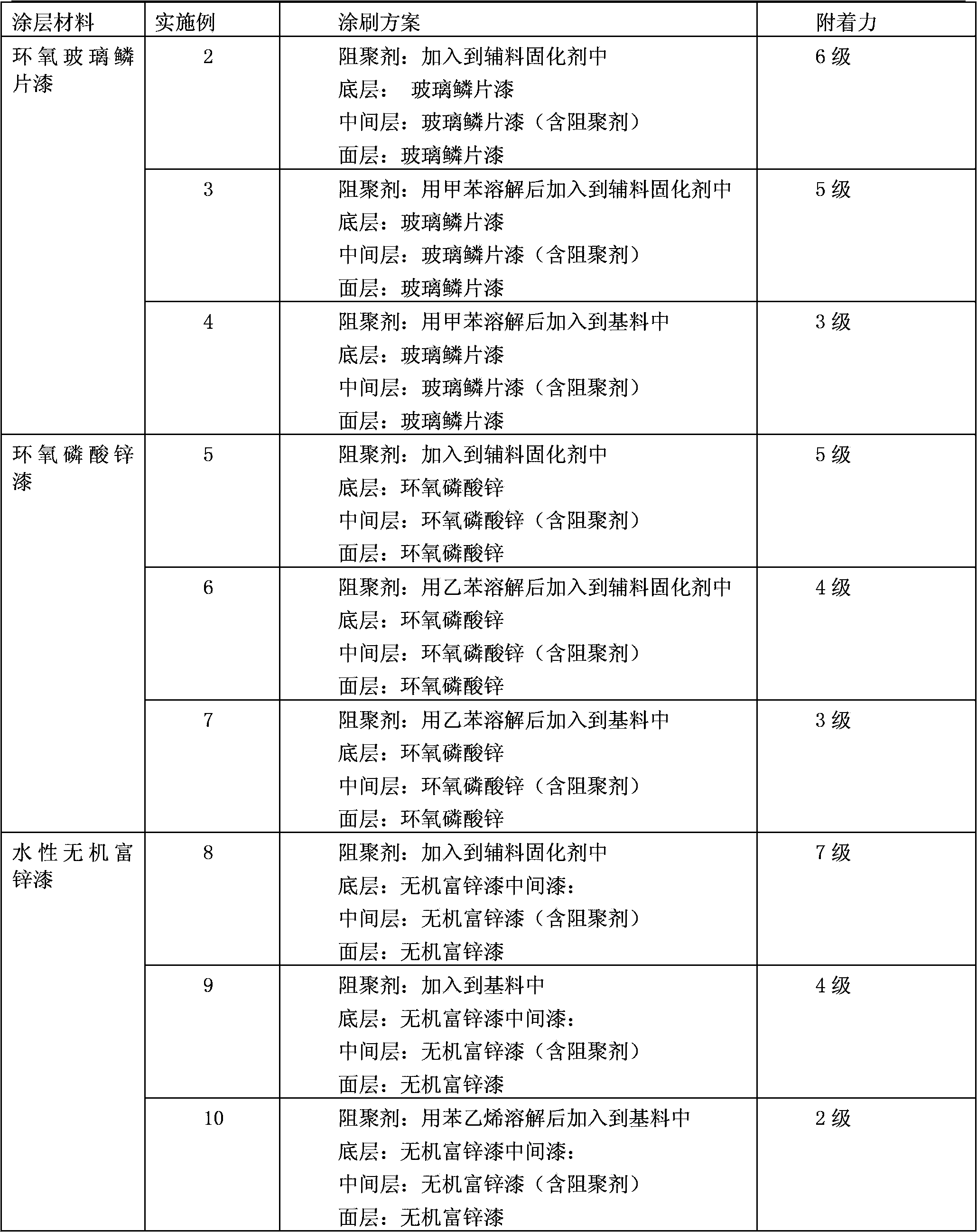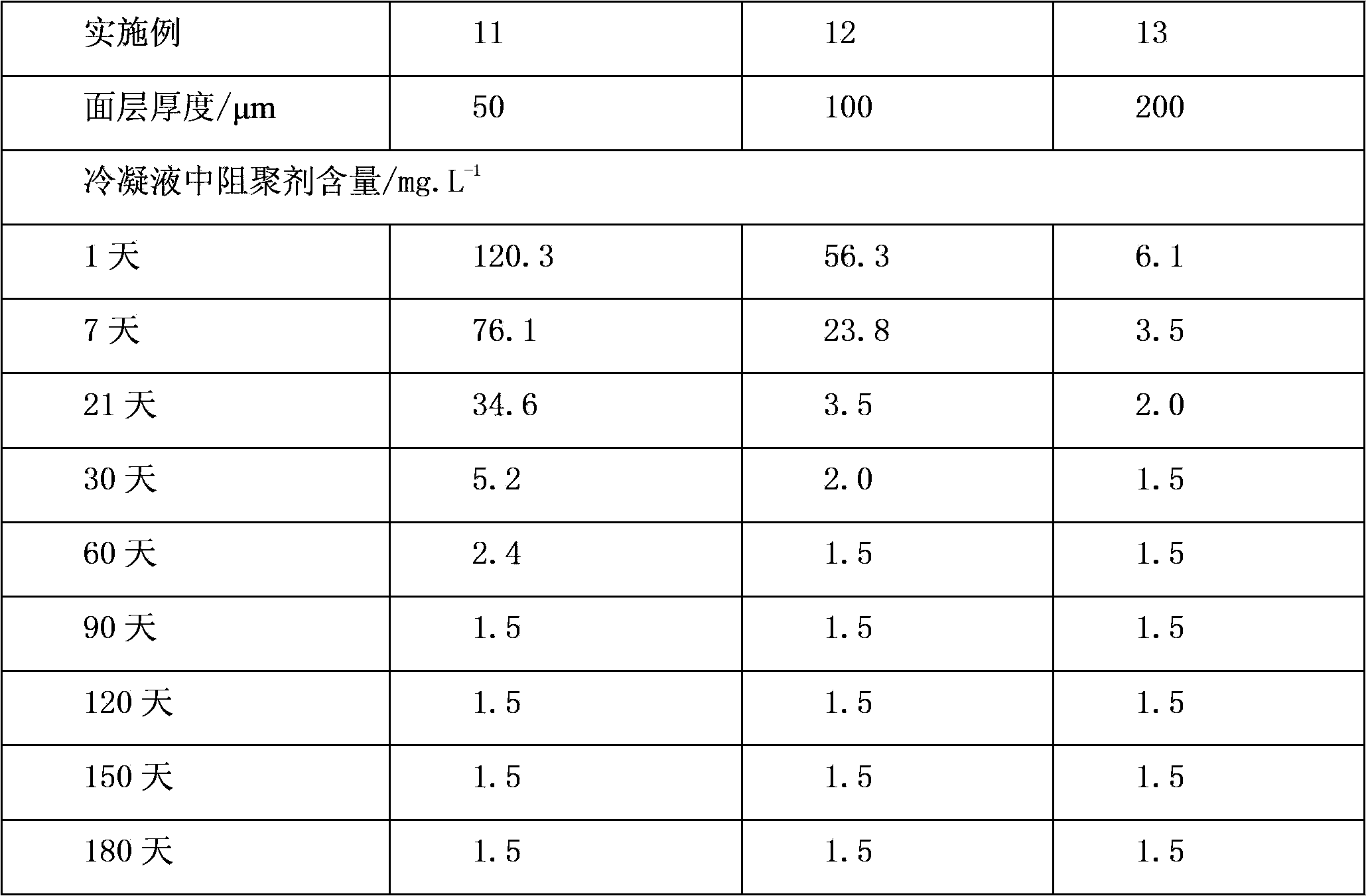Method for preventing vinyl monomer from being polymerized in storage tank
A vinyl monomer and storage tank technology is used in the field of preventing the polymerization of monomers in storage tanks, which can solve the problems of low addition amount of polymerization inhibitor, and achieve the effects of improving adhesion, simple and easy process, and uniform distribution.
- Summary
- Abstract
- Description
- Claims
- Application Information
AI Technical Summary
Problems solved by technology
Method used
Image
Examples
Embodiment 1
[0026] Apply epoxy resin paint on a standard tinplate plate (50×100×0.2~0.3mm), the amount of polymerization inhibitor p-tert-butyl catechol accounted for 3% of the base material (mass fraction, the same below), first put the Dissolve tert-butyl catechol with ethylbenzene, then add the ethylbenzene solution of p-tert-butyl catechol to the epoxy paint base and stir evenly, then add curing agent thick paste amine adduct to cure for 0.5 hours, and then paint . A three-layer overcoating method is adopted, in which the thickness of the bottom layer is about 30 μm, the middle layer is about 80 μm, and the surface layer is about 110 μm. After the coating was dry, the adhesion was tested, and then the coated panel was placed in a 5L styrene storage tank and soaked at 30°C for 3 months. The results are shown in Table 1.
[0027] Table 1: Variation of coating adhesion with different brushing methods
[0028]
[0029] It can be seen from Table 1 that the compatibility between the po...
Embodiment 2~10
[0031] On the tinplate plate described in Example 1, different coatings and polymerization inhibitor addition methods and three-layer overcoating methods were used to paint, wherein the polymerization inhibitor p-tert-butylcatechol in Examples 2 to 4 Add-on accounts for 10% of base material, and in embodiment 5~7, the add-on of polymerization inhibitor p-tert-butylcatechol accounts for 15% of base material, and in embodiment 8~10, add-on of inhibitor p-tert-butylcatechol 25% of base material. The changes in coating adhesion are shown in Table 2.
[0032] Table 2: Changes in adhesion of different coatings
[0033]
[0034] It can be seen from Table 2 that no matter what kind of coating, which solvent is used, the appropriate addition method of polymerization inhibitor should be added to the base material. After the above-mentioned coated boards were soaked in styrene for a period of time, the coatings of Examples 4, 7, and 10 were intact without peeling; the coatings of Ex...
Embodiment 11~13
[0036] Brush epoxy resin paint on the inner wall of the 5L styrene storage tank tank roof, wherein the polymerization inhibitor is selected from the compound of p-tert-butylcatechol and 2-sec-butyl-4,6-dinitrophenol, two The mass ratio of the former is 2:3, and the amount added accounts for 20% of the base material. First, dissolve the polymerization inhibitor with styrene, and then add the styrene solution in which the polymerization inhibitor is dissolved to the epoxy paint base material and stir evenly. After mixing evenly with the auxiliary material curing agent, use the method of three-layer overcoating, and paint according to different surface thicknesses. The thickness of the bottom layer is 40 μm, and the thickness of the middle layer is 60 μm. Under the storage temperature of 40°C, the styrene condensate was collected regularly, and the content of polymerization inhibitor was analyzed. The results are shown in Table 3.
[0037] Table 3: Changes in the content of poly...
PUM
| Property | Measurement | Unit |
|---|---|---|
| thickness | aaaaa | aaaaa |
| thickness | aaaaa | aaaaa |
| thickness | aaaaa | aaaaa |
Abstract
Description
Claims
Application Information
 Login to View More
Login to View More - R&D
- Intellectual Property
- Life Sciences
- Materials
- Tech Scout
- Unparalleled Data Quality
- Higher Quality Content
- 60% Fewer Hallucinations
Browse by: Latest US Patents, China's latest patents, Technical Efficacy Thesaurus, Application Domain, Technology Topic, Popular Technical Reports.
© 2025 PatSnap. All rights reserved.Legal|Privacy policy|Modern Slavery Act Transparency Statement|Sitemap|About US| Contact US: help@patsnap.com



